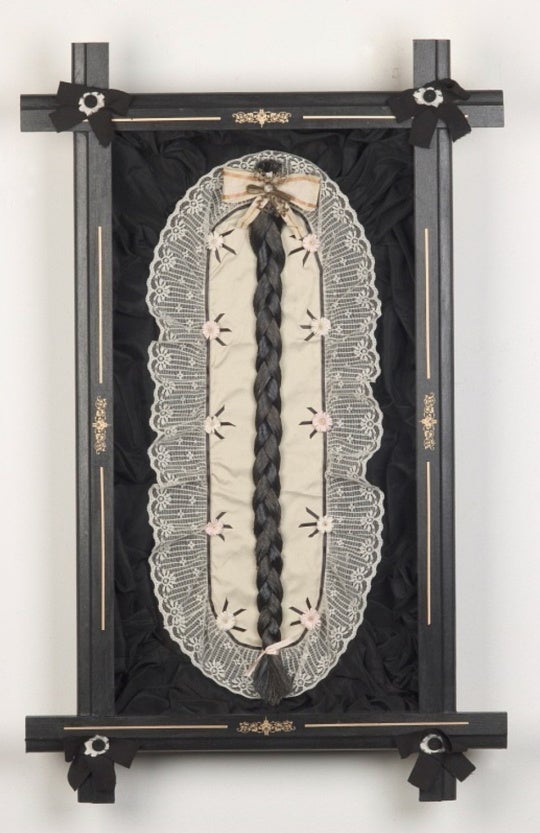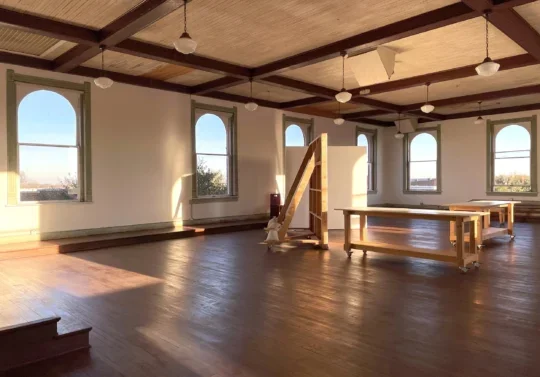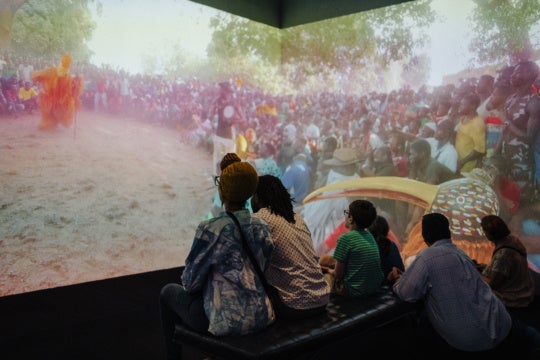
There are few art spaces in Atlanta lovelier on a summer evening than Whitespace, in its 1893 carriage house with a dreamy patio and gardens. The opening of “Luminous Animals,” a group show featuring nearly a dozen artists from Zeitgeist gallery in Nashville, happened to land on a particularly warm and clear night. However, the good weather was just a bonus— “Luminous Animals,” in all its versatility, could bend its aesthetics to rain or shine.
“Luminous Animals” is the second artist trade-off between the two galleries. Last July, Zeitgeist temporarily turned its space over to Whitespace artists, including Amy Pleasant, Eric Mack and Zipporah Thompson. According to Zeitgeist, the exchange is meant to “spark a conversation between the two cities and shed some light on artistic trends across the southeast.” Both cities are experiencing massive change and growth, and the partnership seems to serve as both a networking opportunity and regional artistic showcase.

Group shows can be messy and awkward, a jumbling of vastly different artists operating under the same vague theme. The artwork is a mixed bag of sculpture, photography and paintings that variously clash and gel together. But there are always standouts.
In this case, two large sculptures by Alex Lockwood are the eye-catchers. Red Dancer, made up of shotgun shells, blue plastic caps, long, red plastic tubes and other plastic parts, is a humanlike form suspended from the ceiling. Red Dancer is interactive, too—visitors can “dance” with the figure by pulling on its “hands,” which is really just a plastic handle held together with rope.. Shotgun shells will always be a contested material, especially in times of police brutality and gun violence, but, like a scary Muppet, Lockwood’s work is too goofy to be truly frightening. Lockwood’s second (and arguably better) piece sits tucked away behind a screen in a corner. Composed of a thousand blue and green bread ties, Birth of a Blue Man stares up at the viewers from the floor. It’s whimsical, creepy, and hilarious.

A lovely acrylic and archival print titled Probe 02 by Ward Schumaker shows a gray geometric shape that resembles a staircase sitting neatly atop a ghostly print of what could be a ship, a helicopter, a lamp, a spaceship, a pier, or perhaps some collaged combination of all of the above. Beside it, positioned in a corner, sits Schumaker’s White Mountain, a polychrome wood sculpture that mirrors the staircase shape in Probe 02. The combination works beautifully.

Caroline Allison’s notable work, Panther Motel, invites us in to a seemingly normal motel that is both eerie and inviting. It’s appealing because of the cheery blue balcony and somewhat dilapidated (but still charming) palm trees. It’s unnerving only after you realize what you’re looking at — the caption of Panther Motel reads “On September 10, 2001, two of the September 11th hijackers checked out of Room 12.” Suddenly, the blue balcony is icy and ominous.

The bright abstract paintings by Richard Feaster and Karen Seapker vie for attention. Seapker’s Clasp (Lightroom) is especially striking, with its oily pink and blue wormholes. Are we drowning, or are we emerging? The oil paint and white highlights give the piece a wet appearance, as if it lived at the bottom of a brightly light, neon cave. Patrick DeGuira’s two acrylic pieces featuring bold color blocks and text, Labor Painting (When the Horse met the Mule) and Labor Painting (When the Mule met the Horse) allow the viewer to come to their own lighthearted (or dark) conclusions.

Mule met the Horse), 2013; acrylic on canvas, 18 by 22 inches.
Works by Lars Strandh offer a calm alternative. Potentially overlooked because of the boisterous neighboring abstractions, Strandh’s pieces certainly deserve a second glance. In one, thousands of thin horizontal brush strokes pile on top of each other to form what appear to be monochromatic field. Up close, the block of dark blue breaks down into a multitude of colors, including red, yellow, and purple.
Mesmerizing, minimalist and strangely trippy, Strandh’s work invites, rather than demands, our attention.
The whole exhibition is varied and curious, and offers an array of techniques and styles. There’s a lot to enjoy in “Luminous Animals,” and, of course, there’s always the garden.
“Luminous Animals” is on view at Whitespace Gallery through July 29.
E.C. Flamming is an Atlanta-based writer. She has been published in ART PAPERS, Paste, and The Peel Literature & Arts Review.




